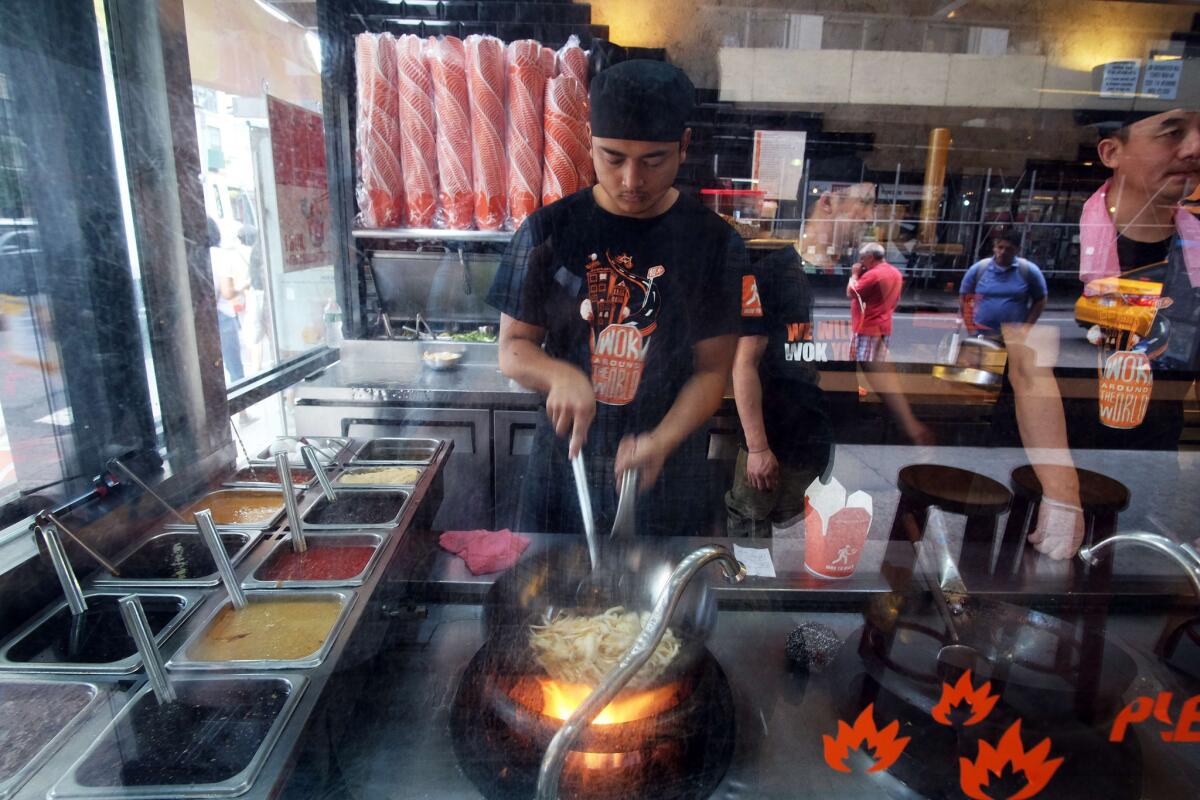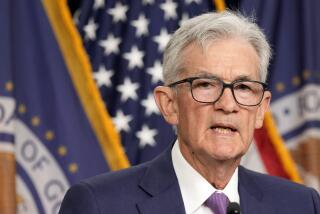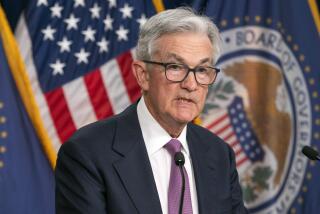Solid jobs report all but guarantees Fed rate hike; now the question is: How fast?

A cook prepares an order for a customer at a New York restaurant on July 1.
The pressing economic question for months has been when Federal Reserve policymakers would judge the recession-ravaged economy strong enough to start raising a key interest rate.
Solid job growth of 211,000 in November signaled that the time is now.
A small rate hike this month is now a near certainty after Friday’s Labor Department report, economists said. And the new data — showing wage gains and more Americans jumping back into the labor force — quickly shifted speculation to how quickly rates will rise.
“The real guessing game is not so much the first increase but when is the second increase?” said Chad Moutray, chief economist for the National Assn. of Manufacturers, an industry that has been struggling recently. “How aggressive is the Fed going to be next year?”
Fed Chairwoman Janet L. Yellen has said the central bank would move gradually to avoid shocking the still-recovering economy.
The benchmark federal funds rate affects terms for short-term consumer and business loans, and also has an effect on longer-term mortgage rates. The Fed has kept the rate near zero for seven years to stimulate the economy during and after the Great Recession.
The first hike of just 0.25 percentage points is expected to be announced after the Fed’s Dec. 15-16 meeting. Some economists had thought that policymakers could wait as long as six months before nudging the rate up again.
But Friday’s signs of labor market strength could lead the Fed to act more quickly to control inflation as worker incomes rise, economists said.
“If job growth continues to be 200,000 per month, I think the fed funds rate will be higher than 1% a year from now,” said Gad Levanon, director of macroeconomic and labor market research at the Conference Board.
A higher interest rate would be welcomed by savers, who have seen money sitting in the bank earn a pittance during the last seven years.
Fed policymakers are eager for a rate increase as well because it would provide them an important weapon to fight the next economic downturn — the ability to lower the rate to discourage savings and stimulate spending.
Analysts said the jobs report left little doubt that the Fed would hike the rate this month after Yellen and other policymakers sent signals recently to prepare financial markets.
“They spent the last several weeks setting up the tent and sending out invitations to their party,” said Patrick O’Keefe, economic research director at accounting and consulting firm CohnReznick. “Now they have the reason to have it.”
Investors were encouraged by the jobs report, pushing the Dow Jones industrial average up nearly 400 points to close at 17,847.63. That followed a 252-point decline Thursday after new stimulus measures from the European Central Bank fell short of expectations.
Friday’s labor market reading exceeded expectations. Economists had forecast a gain of about 190,000 net new jobs.
The unemployment rate held steady at 5% last month, the lowest level in more than seven years, and for good reason. About 273,000 people joined the labor force, lifting the closely watched participation rate up a bit to 62.5%, though that still was a historically low level.
Wages continued to improve. Average hourly earnings rose 4 cents to $25.25. That was down from a robust 9-cent gain in October but continued a positive trend.
For the 12 months that ended Nov. 30, hourly wages are up 2.3%, well above the low inflation rate.
The Labor Department revised up job growth for September and October by a combined 35,000. That meant the economy added an unusually high 298,000 jobs in October, the best month since last year, though some of the gains were catch-up from lackluster growth the previous two months.
Job growth has averaged 218,000 the last three months. The labor market has added an average of 237,000 net new positions for the 12 months that ended Nov. 30.
The strong housing market was a big factor in November’s gains. Construction companies added 46,000 net new jobs, the most in nearly two years.
Payrolls at restaurants and bars increased by 32,000. Retailers added 31,000 net new positions and healthcare providers added 24,000. The motion picture and sound recording industries had a surprising decline of 13,400 jobs, but one month swings are not unusual and the sector has gained about 9,000 jobs over the last year.
Manufacturers continued to be hurt by the strong dollar, which makes U.S. goods more expensive abroad. Exports of goods in October dropped to the lowest level in more than four years as the trade deficit widened, the Commerce Department said Friday.
The manufacturing sector shed 1,000 net jobs in November, the third decline in four months, the Labor Department said.
A big factor was the loss of mining jobs because of lower oil prices. That sector lost 11,000 jobs in November and has shed 123,000 positions this year.
“Our exports are down pretty significantly so far this year. Part of that is the dollar and part of it is that many of our key trading powers are not growing as fast as we’d like,” said Moutray of National Assn. of Manufacturers, noting slowing economies in Europe and Asia.
An initial Fed interest rate increase in December shouldn’t hurt the industry because the move has been assumed to be coming soon, Moutray said. But a quicker pace of rate hikes could be a problem if the global economy doesn’t improve.
jim.puzzanghera@latimes.com
More to Read
Inside the business of entertainment
The Wide Shot brings you news, analysis and insights on everything from streaming wars to production — and what it all means for the future.
You may occasionally receive promotional content from the Los Angeles Times.










